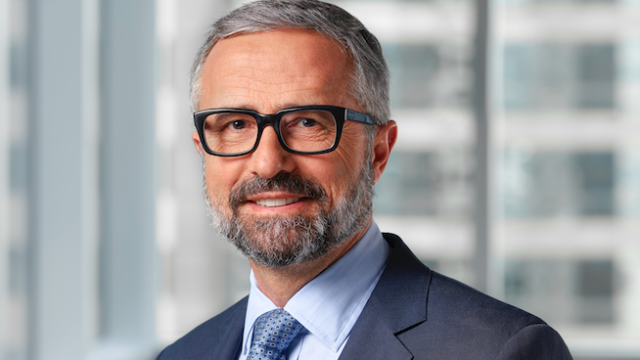Claude Haberer, Pictet Wealth Management
Asset managers in the region have been pushing the ESG story, citing increasing demand from investors.
Wealth managers have also followed suit. UBS Wealth Management, for example, launched its sustainable investing mandate to Asia-Pacific clients in April last year and the bank said it has since gathered $550m in assets from the region.
Deutsche Bank Wealth Management also joined the bandwagon and this year added ESG as one of its key investment themes, although it acknowledged that it is still not a massive topic in Asia when compared to the rest of the world.
Total ESG invested assets in Asia ex-Japan amounts to a mere $52bn when compared to Europe ($12trn) and the US ($8trn), the bank said.
For Pictet Wealth Management, it will take a decade for ESG to rise to prominence in Asia client portfolios, according to Claude Haberer, Hong Kong-based equity partner and CEO for Asia-Pacific.
“ESG gets traction especially with the younger generation. But in Asia, we are still with the older generation, so it has less traction than in Europe or America. I would say that in 10-15 years, it would be much more of a factor for us than it is today.”
Because of that, the firm does not have plans yet to offer an ESG-focused mandate for Asia-based clients.
However, Haberer noted that what the firm has been advocating globally is to be a “responsible investor”. For example, in 2017, it started to incorporate ESG factors into its investment process.
“We have been gradually reforming the investment processes for both equity and bond selection, and fund selection to integrate ESG factors.
“We have also on-boarded some ESG funds into our funds offering,” he added.
Product launch
Instead of focusing on a specific ESG-mandate, Haberer said his firm is in the process of launching a discretionary mandate that will focus on short-dated bonds, but did not give a target date.
“Asian investors are always looking for yield, and money market and fixed deposit yield may not be able to satisfy their needs.
“Asia bonds provide attractive yield while having similar risk characteristics when compared to European and US bonds,” he said.
In terms of investment trends, Haberer believes that thematic investments have become popular among the firm’s clients.
Examples of the thematic offerings include a discretionary mandate called the “Asia Leaders” strategy, which was launched in 2017 and invests in companies benefiting from the leading themes and trends in Asian equity markets.
“These are companies we see that could become international leaders, the future Tencents,” Haberer said.
The firm also offers thematic products under its funds platform, which include those managed by Pictet Asset Management, such as the Robotics Fund, the Security Fund and the Smart Cities Fund, he added.
Funds platform
The firm has around 250 recommended funds, which include long-only products, hedge funds and private equity funds, according to Haberer.
Alternatives are a key part of the firm’s offering, noted Richard Mak, the firm’s Hong Kong-based managing director and head of advisory.

Richard Mak, Pictet Wealth Management
Excluding illiquid alternatives, the firm recommends around 15-25% of a client’s portfolio to be in the asset class, depending on their risk appetite. For clients that have an investment horizon of at least 10 years, 5-15% of their assets are recommended to be in private equity or real estate.
For private equity, the firm invests mostly in fund-of-funds as risk is more diversified, according to Haberer.
Most of the firm’s fund selection team is based in Geneva, with other staff based in Singapore to focus on emerging market and Asia funds, according to Mak.
The team selects only 10-20 funds in each asset class every year. However, fund products usually stay on the recommended list for three-to-five years on average.
“We don’t usually on-board funds easily. Track record is important, but we put strong emphasis on the stability and consistency of the manager. We do not chase short-term performance as we look for managers to deliver good alpha generation over a three-to-five year horizon,” Mak said.
The firm also makes use of ETFs.
“We believe active management can deliver alpha generation in the long-run, while ETFs are also an important element in terms of building the portfolio.”
Mak explained that ETFs are used mostly for tactical allocations. ETFs are also used for markets where active fund managers have difficulty outperforming their benchmarks.
For ETF selection, the firm looks at the fund provider, tracking error, liquidity and other quantitative factors. It also takes into consideration where the ETF is domiciled for the tax efficiency of its clients.
On Tuesday, FSA will run part 2 of the interview, which focuses on the firm’s business prospects.

















